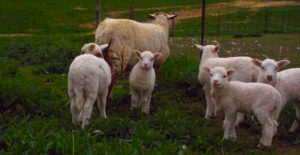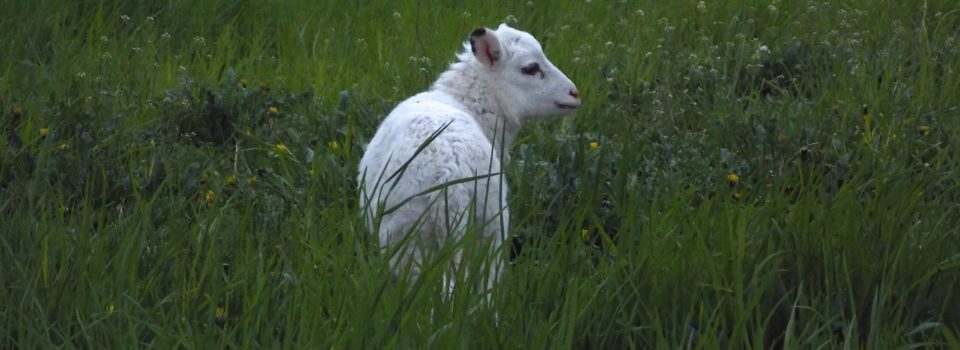Sorting Sheep
Some friends called and asked if they could stop by on their way home from picking up their new puppy, of course they could. I love my friends and puppies. The eight week old pup explored the yard. She ran from a curious hen, chewed on everything she found, and then fell asleep on a blanket in the car.
As they were getting ready to leave the couple looked at each other with curious expressions. Through a few not so subtle head nods and eye rolling maneuvers they finally asked the question I suspect was the real reason for their visit.
“Could you tell us if we have a male or female puppy?”
“Really, you can’t tell?” I started to laugh, “It’s a girl.”
The were relieved, they’d wanted a female. The confusion came from the puppies pot belly with a protruding naval stump.
We all laughed. Sometimes what seems obvious, isn’t.
My friend is not perfect - nor am I - and so we suit each other admirably. - Alexander Pope
 Lambing season is almost finished, just a couple of ewes to go. Keith leaned on the gate and looked over at me, “See that sheep over there. She’s never going to have lambs.”
Lambing season is almost finished, just a couple of ewes to go. Keith leaned on the gate and looked over at me, “See that sheep over there. She’s never going to have lambs.”
I looked at the sheep he was pointing at, “How do you know? She’s a healthy ewe, maybe she was just a late breeder.”
“Nope. It’s because she is a he,” Keith chuckled.
Sorting sheep is a big deal. In the fall we move the sheep through a series of pens to separate the females from the wethers (castrated males). Not only are the sheep separated into pens but they’re identified with livestock marking paint. Each sheep is cross referenced according to their ear tag. Throughout the sorting process each animal gets examined no less than four times as they move through the pens.
Despite this ‘fail safe’ system all four of us misidentified him. I looked at Keith and laughed, “Really, you can’t tell it’s a boy.”
What seemed obvious, wasn’t.
Here's more information on organic grass-fed lamb
